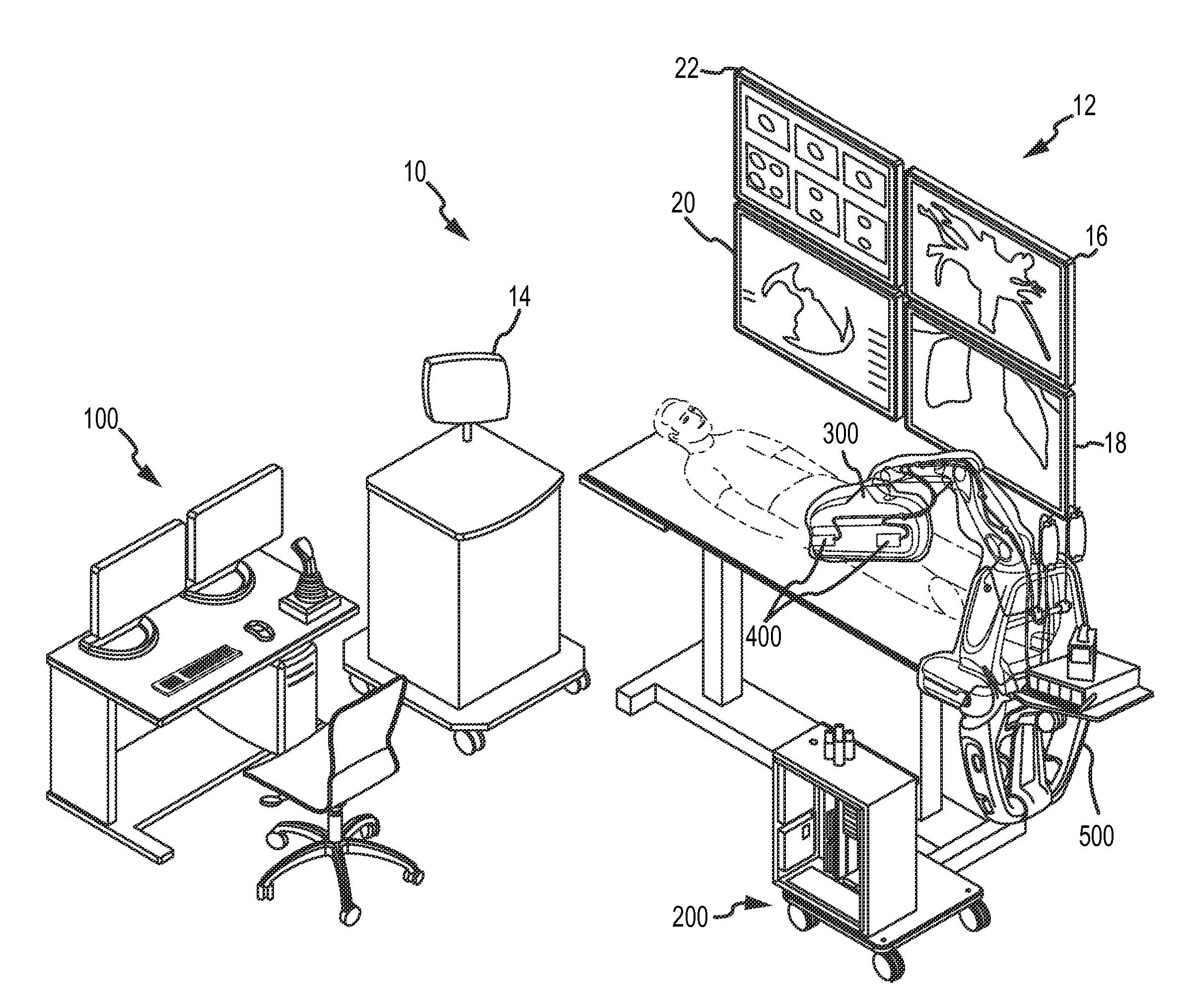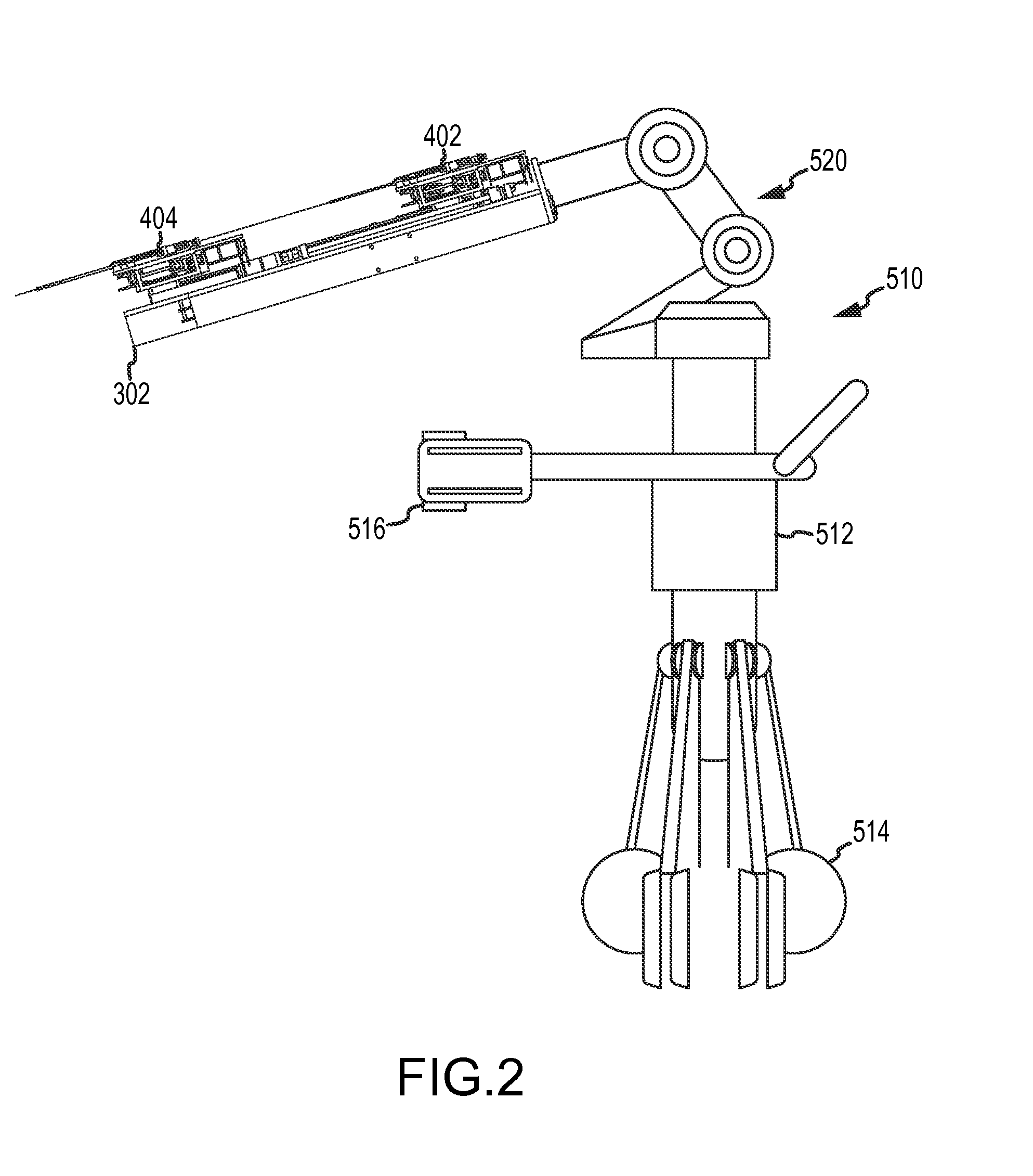Proximity sensor interface in a robotic catheter system
- Summary
- Abstract
- Description
- Claims
- Application Information
AI Technical Summary
Benefits of technology
Problems solved by technology
Method used
Image
Examples
Embodiment Construction
[0026]Before proceeding to a detailed description of the proximity / contact sensor interface for a robotic catheter system, a brief overview (for context) of an exemplary robotic control and guidance system (RCGS) for manipulating a medical device will first be described. The description of the RCGS will detail how several electric motors can be used to control the translation, distal bending and virtual rotation of a catheter and surrounding sheath. After the description of the RCGS, the present specification will then provide a brief description of proximity / contact sensing technology that can be used in certain embodiments. Then, the present specification will describe the proximity / contact sensor interface for use in an RCGS.
[0027]Now referring to the drawings wherein like reference numerals are used to identify identical components in the various views, FIG. 1 is a diagrammatic view of an exemplary RCGS 10, in which several aspects of a system and method for automatic detection ...
PUM
 Login to View More
Login to View More Abstract
Description
Claims
Application Information
 Login to View More
Login to View More - R&D
- Intellectual Property
- Life Sciences
- Materials
- Tech Scout
- Unparalleled Data Quality
- Higher Quality Content
- 60% Fewer Hallucinations
Browse by: Latest US Patents, China's latest patents, Technical Efficacy Thesaurus, Application Domain, Technology Topic, Popular Technical Reports.
© 2025 PatSnap. All rights reserved.Legal|Privacy policy|Modern Slavery Act Transparency Statement|Sitemap|About US| Contact US: help@patsnap.com



